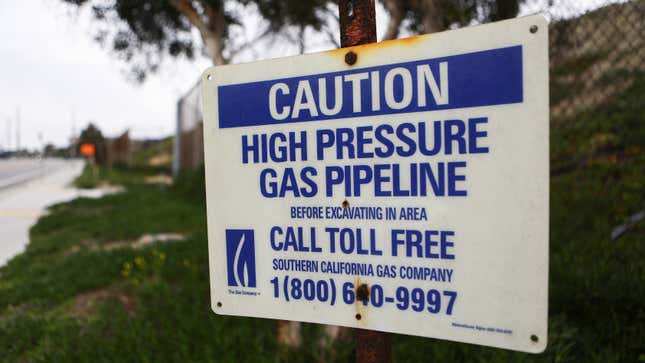
New satellite images show that the world’s number of large methane hotspots increased by nearly a third in the first eight months 2020, despite industry pledges to reduce greenhouse gas pollution and tanking fuel demand tied to the pandemic.
A new report by Parisian data analytics firm Kayrros used satellite imagery from the European Space Agency to examine activity in the world’s methane hotspots, which it defines as places where more than 5.5 U.S. tons (5 metric tons) of the gas leak per hour. When researchers compared the number of large leaks seen from January through August 2019 to the same period in 2020, they found that the number increased by 32%. During the first eight months of 2020, those hotspots released an average of 26,000 tons of methane globally per day.
Some countries where the oil and gas industry is most active saw a more than 40% uptick in hotspots. Among the countries with the most methane hotspots were the U.S., Russia, Algeria, Turkmenistan, Iran, and Iraq.
This spike comes despite energy giants’ promises two years ago to reduce their output of the gas. It also comes in spite of the oil and gas market plummeting due to crashing demand for their products amid covid-19 economic slowdowns. The U.S. has seen a number of oil- and gas-producing states shutter oil rigs at a rapid clip, but the new findings indicate that production has not been lowered enough to keep pace with that precipitous fall.
This is bad news because though methane accounts for a smaller portion of all greenhouse gas emissions than carbon dioxide, it has 36 times the planet-warming potential over a 100-year timeframe.
“Such increases in methane emissions are concerning and in stark contradiction to the direction set in the Paris Agreement of 2015,” Antoine Rostand, president of Kayrros, said in a press release.
Kayrros believes the increase reflects the “impact of changing operational practices” for energy companies and “adjusted activity surrounding pipelines.” In other words, it seems that these companies are slacking on maintaining and retrofitting their infrastructure to prevent leaks. Companies may also be cutting corners on costly methane reduction practices, like venting and flaring the gas, in order to save money during their industry’s slump.
Some governments are considering taking steps to tackle this issue. This week, the European Union—the biggest importer of natural gas in the world—is considering instating binding methane emissions standards for all of the gas it purchases. This stands in sharp contrast to recent actions by the Trump administration, which in August finalized a rollback of methane regulation. According to the International Energy Agency, the industry could reduce its methane emissions by 75% using currently available technology.
But even those changes wouldn’t eliminate all methane pollution, let alone emissions of other dangerous planet-warming gases. There’s another, better option: The world could stop producing fossil fuels altogether like the best-available science has long suggested.